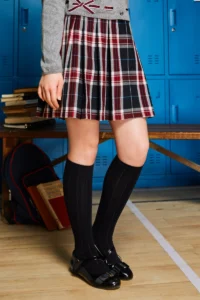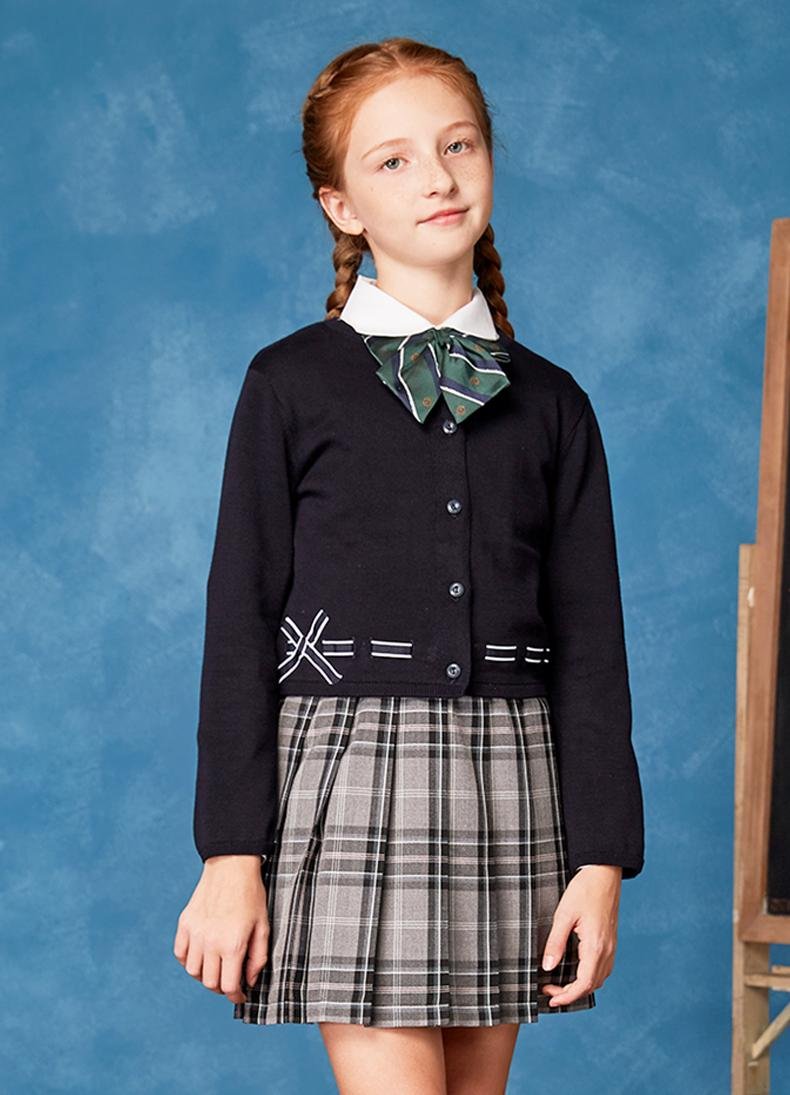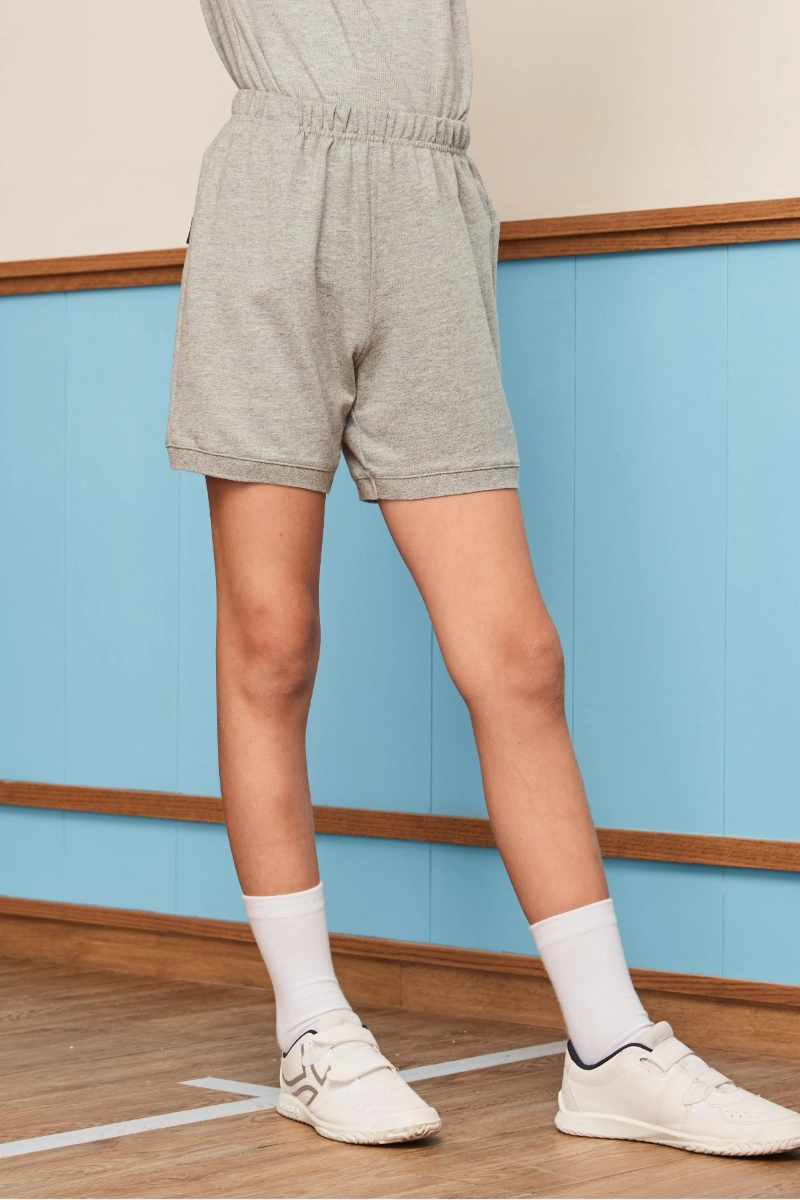Plaid pleated skirts are a classic fashion item that has maintained its popularity across various generations. They are often associated with a timeless, preppy look, but their versatility and stylish appeal have made them a staple in casual and professional wardrobes alike. Whether you are an entrepreneur looking to source plaid pleated skirts for your boutique, a fashion designer looking for the perfect manufacturer for your new collection, or a wholesaler aiming to provide quality products to customers, choosing the best manufacturer is essential.
This article will provide a comprehensive guide on how to choose the best plaid pleated skirt manufacturer, detailing key factors such as production quality, manufacturing capabilities, cost-effectiveness, reputation, and reliability. By the end, you’ll have a clearer understanding of the process and what to look for when partnering with a manufacturer for plaid pleated skirts.
1. Understanding the Plaid Pleated Skirt Market
Before diving into the specifics of choosing a manufacturer, it’s essential to understand the plaid pleated skirt market. These skirts come in various styles, cuts, fabrics, and pleating techniques. Depending on your target audience, you might need a manufacturer that can produce skirts that cater to a specific demographic or aesthetic.
Key Elements of a Plaid Pleated Skirt
- Plaid Pattern: The most defining feature of these skirts is the plaid pattern, which can vary in terms of color, grid size, and design. Understanding the latest trends or your target demographic’s preferences will help narrow down your manufacturer options.
- Fabric: They can be made from various materials, including cotton, wool, polyester, and blends. The choice of fabric will impact both the comfort and durability of the final product.
- Pleating Style: The pleats in a plaid pleated skirt can be knife pleats, box pleats, or accordion pleats. Some manufacturers may offer specialized pleating techniques that could set your skirts apart from competitors.

2. Researching Plaid Pleated Skirt Manufacturers
The first step in choosing the right manufacturer is to conduct thorough research. While there are many options out there, not all manufacturers will meet your specific needs or production requirements. Here are some steps to guide your research:
a)Industry Trade Shows
Attending trade shows or fashion-related events is a great way to meet potential manufacturers in person. Trade shows also provide an opportunity to see the quality of samples and gain a deeper understanding of each manufacturer’s capabilities.
b)Word of Mouth and Recommendations
If you are already in the fashion or apparel industry, asking for recommendations from peers or colleagues can help you find trustworthy manufacturers. Networking within the industry can also reveal hidden gems that may not be found online.
c)Manufacturer Websites and Portfolios
Once you have identified potential manufacturers, take the time to thoroughly review their websites. Look for detailed product catalogs, customer testimonials, and case studies that showcase their work, especially in producing plaid pleated skirts. Their portfolio will provide insights into their capabilities and their experience in manufacturing skirts.
3. Key Factors to Consider When Choosing a Plaid Pleated Skirt Manufacturer
Choosing a manufacturer for plaid pleated skirts is more than just finding someone who can make the product; it’s about partnering with a company that aligns with your goals and can provide a high level of consistency, quality, and innovation. The following factors are crucial when evaluating manufacturers:
a) Production Quality and Fabric Options
Quality is paramount when it comes to apparel manufacturing. You want to ensure that your manufacturer produces skirts that are durable, well-stitched, and comfortable to wear. Here are some questions to ask when assessing a manufacturer’s quality:
- Do they offer fabric samples for review?
- What is their quality control process during production?
- How do they handle fabric shrinkage, color bleeding, or other common issues?
The manufacturer should also offer a wide selection of fabrics for plaid pleated skirts. The more options they provide, the better you can cater to your audience’s tastes.
b) Customization and Flexibility
They can be customized in a variety of ways, from the size and color of the pleats to the type of fabric and waistband design. You will want to choose a manufacturer that offers flexibility and customization options to meet your specific requirements. Ask about their capacity to handle custom designs and how they approach client requests for unique patterns, colors, and pleating styles.

c) Manufacturing Capabilities and Capacity
The manufacturing capabilities of the company should align with your needs in terms of both production volume and turnaround time. Some manufacturers specialize in large-scale production, while others focus on small-batch, high-quality work. Key questions to consider include:
- What is their minimum order quantity (MOQ)?
- Can they meet your production deadlines?
- Are they capable of scaling up production if demand increases?
It’s also essential to understand the manufacturer’s lead time. Ensure that they can produce your plaid pleated skirts within your required timeframe without compromising quality.
d) Reputation and Experience
A reputable manufacturer is more likely to deliver quality products and reliable service. To assess a manufacturer’s reputation:
- Look for reviews and feedback from other customers.
- Check if they have experience producing plaid pleated skirts, particularly in the styles and fabrics you’re interested in.
- Verify their history of meeting deadlines and handling production issues effectively.
An experienced manufacturer will have better systems in place for quality control, communication, and troubleshooting problems during the manufacturing process.
e) Ethical Manufacturing Practices
In today’s fashion industry, sustainability and ethical practices are more important than ever. Many consumers are looking for brands that prioritize ethical sourcing, sustainable materials, and fair working conditions. When selecting a plaid pleated skirt manufacturer, consider asking the following questions:
- Are they committed to ethical labor practices?
- Do they use eco-friendly or sustainable fabrics?
- Do they implement environmentally friendly manufacturing processes?
Manufacturers who prioritize sustainability and ethical practices not only align with modern consumer values but also contribute to a positive brand image.
f) Cost and Value for Money
Pricing is always a key consideration when choosing a manufacturer, but it’s essential to focus on value rather than just cost. A low price may indicate poor quality or unreliable service, while a higher price may be justified by exceptional craftsmanship or premium fabrics. Consider the following:
- Compare quotes from multiple manufacturers.
- Ensure the price aligns with the quality you expect.
- Factor in shipping costs, tariffs, and other additional fees when evaluating cost.
Opting for a manufacturer that offers the best value for money—combining quality, service, and cost—is crucial for the long-term success of your business.
g) Communication and Customer Service
Effective communication is key when working with any manufacturer. The ability to communicate clearly, resolve issues quickly, and stay updated throughout the manufacturing process is vital. Ask potential manufacturers:
- How do they handle communication with clients?
- Are they responsive to inquiries and feedback?
- Do they provide clear documentation regarding production timelines, payment terms, and quality control measures?
You’ll want to work with a manufacturer that can respond to your needs promptly and is willing to collaborate on problem-solving when challenges arise.
4. Final Steps in Choosing Your Plaid Pleated Skirt Manufacturer
After considering all of the above factors, it’s time to narrow down your list of potential manufacturers. Here are the final steps you should take:
a) Request Samples
Before making a commitment, always request samples of plaid pleated skirts from the manufacturers you’re considering. This will give you a firsthand look at the quality of their work, the fabric they use, and their ability to meet your design specifications.
b) Evaluate Pricing and Terms
Once you’ve received samples and are satisfied with the quality, assess the pricing and payment terms. Ensure that the manufacturer’s pricing aligns with your budget and that the terms are fair.
c) Establish a Trial Order
Consider placing a smaller trial order to assess the manufacturer’s ability to handle production, delivery, and quality control. This step can help you avoid larger commitments if the manufacturer does not meet your expectations.
d) Build a Long-Term Relationship
After successfully completing an order, work towards building a long-term relationship with your manufacturer. This will ensure that you have a reliable partner for future collections and allow for better pricing and terms as your business grows.
Conclusion
Choosing the best plaid pleated skirt manufacturer requires careful consideration of factors such as production quality, customization options, manufacturing capabilities, reputation, and cost. By conducting thorough research and selecting a manufacturer that aligns with your goals, you can ensure that your plaid pleated skirts are of the highest quality and meet the expectations of your customers. Whether you are looking to create a small batch of high-end skirts or a large production run for retail, the right manufacturer can be the key to your success in the fashion industry.
Recognized by numerous schools and parents, eton kidd is your professional school uniform partner. Interested in our plaid pleated skirt? Contact us for expert advice, tailor-made solutions, and attentive service to help you create your ideal school uniform.




